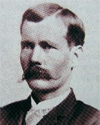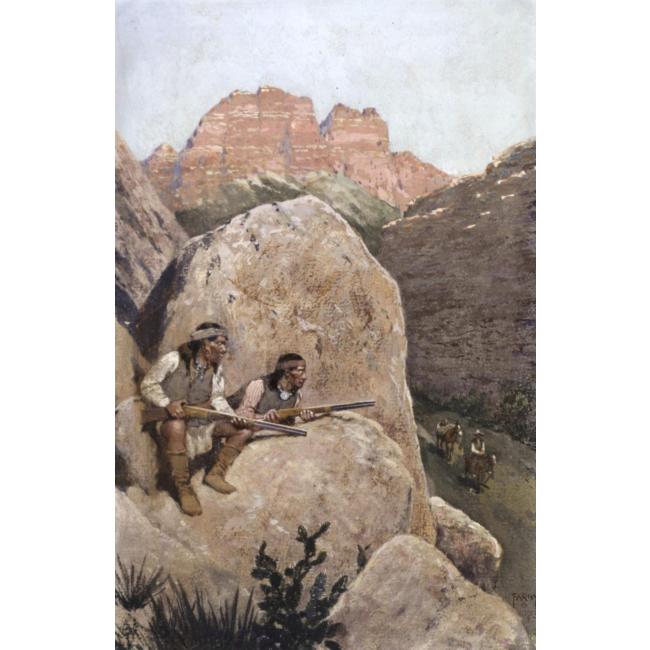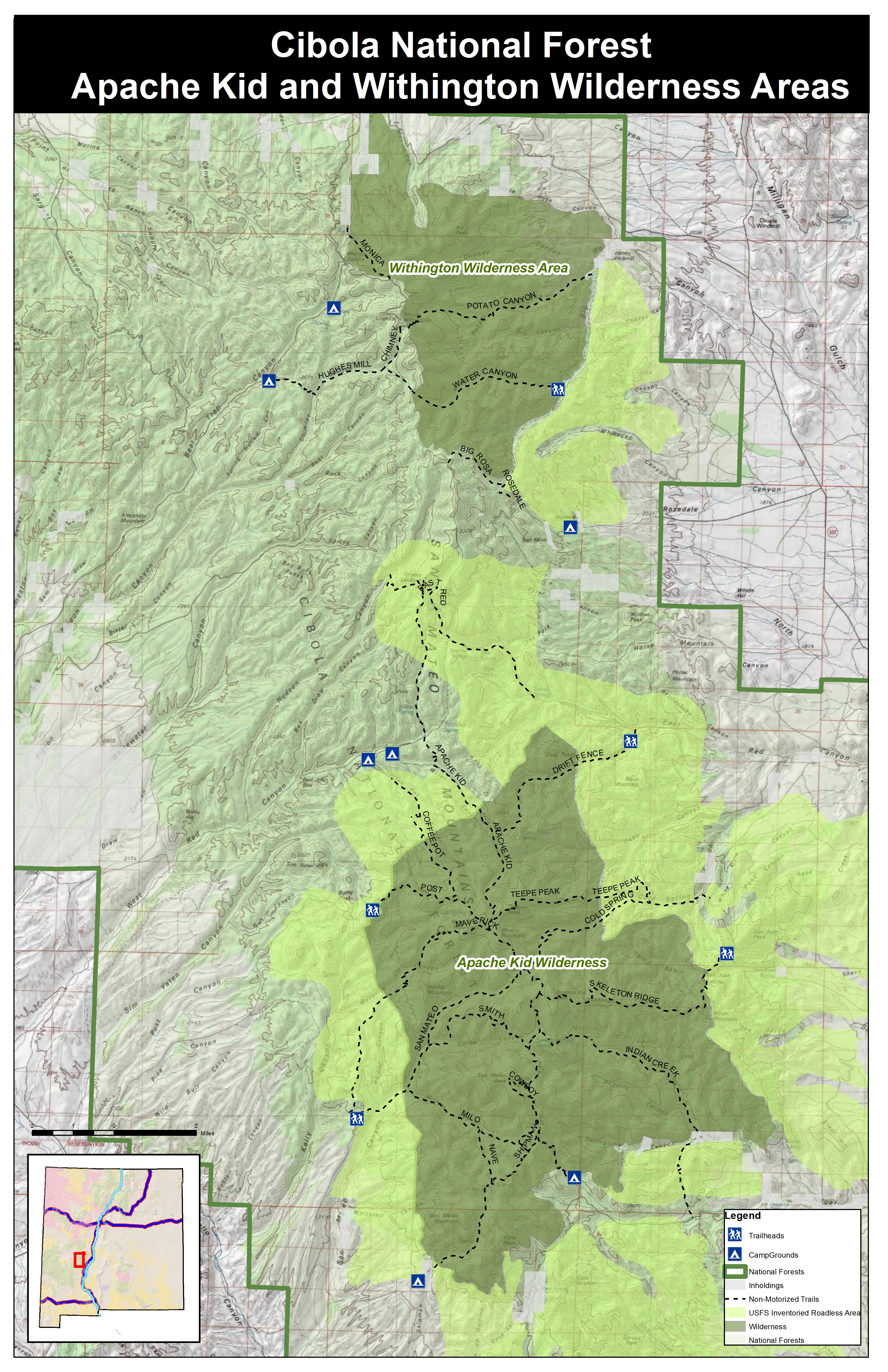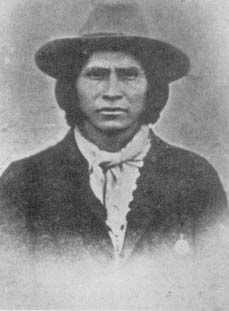|
Massai
Massai (also known as: Masai, Massey, Massi, Mah–sii, Massa, Wasse, Wassil or by the nickname "Big Foot" Massai; c. 1847–1906, 1911?Simmons, Marc. - "TRAIL DUST: Massai's escape part of Apache history". - ''The Santa Fe New Mexican''. - November, 14 2008. - Retrieved: January 25, 2010.) was a member of the Mimbres/Mimbreños local group of the Chihenne band of the Chiricahua Apache. He was a warrior who was captured but escaped from a train that was sending the scouts and renegades to Florida to be held with Geronimo and Chihuahua. It is possible that Massai's true Apache name was ''Nogusea'' (meaning "crazy", according to Jason Betzinez and James Kaywaykla); he was enlisted as a member of Chatto's band as known as ''Ma-Che''. Life Born to White Cloud and Little Star at Mescal Mountain, Arizona, near Globe. He later married a local Chiricahua and they had two children. Massai later met Geronimo, who was recruiting Apache to fight American settlers and soldiers. Massai ... [...More Info...] [...Related Items...] OR: [Wikipedia] [Google] [Baidu] |
Apache Campaign (1896)
The Apache Campaign of 1896 was the final United States Army operation against Apaches who were raiding and not living in a reservation. It began in April after some Apaches killed three United States, American settlers in Arizona. The Apaches were pursued by the army, which caught up with them in the Four Corners region of Arizona, New Mexico, Sonora and Chihuahua (state), Chihuahua. There were only two important encounters during the campaign and, because both of them occurred in the remote Four Corners region, it is unknown if they took place on American or Mexico, Mexican soil. Background Though the Apache Wars ended at Skeleton Canyon, Arizona in September 1886, when Geronimo surrendered, small bands of Chiricahuas continued to fight against the United States and Mexico from their strongholds in the Sierra Madre Occidental, Sierra Madre. There were two well known Apaches leading small groups: the Apache Kid (Haskay-bay-nay-ntayl), Apache Kid and Massai. Both leaders were for ... [...More Info...] [...Related Items...] OR: [Wikipedia] [Google] [Baidu] |
Chiricahua People
Chiricahua ( ) is a band of Apache Native Americans. Based in the Southern Plains and Southwestern United States, the Chiricahua (Tsokanende ) are related to other Apache groups: Ndendahe (Mogollon, Carrizaleño), Tchihende (Mimbreño), Sehende (Mescalero), Lipan, Salinero, Plains, and Western Apache. Chiricahua historically shared a common area, language, customs, and intertwined family relations with their fellow Apaches. At the time of European contact, they had a territory of 15 million acres (61,000 km2) in Southwestern New Mexico and Southeastern Arizona in the United States and in Northern Sonora and Chihuahua in Mexico. Today Chiricahua are enrolled in three federally recognized tribes in the United States: the Fort Sill Apache Tribe, located near Apache, Oklahoma, with a small reservation outside Deming, New Mexico; the Mescalero Apache Tribe of the Mescalero Reservation near Ruidoso, New Mexico; and the San Carlos Apache Tribe in southeastern Arizona. Nam ... [...More Info...] [...Related Items...] OR: [Wikipedia] [Google] [Baidu] |
Chiricahua
Chiricahua ( ) is a band of Apache Native Americans. Based in the Southern Plains and Southwestern United States, the Chiricahua (Tsokanende ) are related to other Apache groups: Ndendahe (Mogollon, Carrizaleño), Tchihende (Mimbreño), Sehende (Mescalero), Lipan, Salinero, Plains, and Western Apache. Chiricahua historically shared a common area, language, customs, and intertwined family relations with their fellow Apaches. At the time of European contact, they had a territory of 15 million acres (61,000 km2) in Southwestern New Mexico and Southeastern Arizona in the United States and in Northern Sonora and Chihuahua in Mexico. Today Chiricahua are enrolled in three federally recognized tribes in the United States: the Fort Sill Apache Tribe, located near Apache, Oklahoma, with a small reservation outside Deming, New Mexico; the Mescalero Apache Tribe of the Mescalero Reservation near Ruidoso, New Mexico; and the San Carlos Apache Tribe in southeastern Arizona. Name ... [...More Info...] [...Related Items...] OR: [Wikipedia] [Google] [Baidu] |
Kelvin Grade Massacre
The Kelvin Grade massacre was an incident that occurred on November 2, 1889 when a group of nine imprisoned Apache escaped from police custody during a prisoner transfer near the town of Globe, Arizona. The escape resulted in the deaths of two sheriffs and triggered one of the largest manhunts in Arizona history. Veterans of the Apache Wars scoured the Arizona frontier for nearly a year in search of the fugitives, by the end of which all were caught or killed except for the famous Indian scout known as the Apache Kid. Background When the reservation system began in Arizona, the local Apache peoples were among the first to be subjugated. Throughout most of the Old West period, the reservations were undersupplied, which led to starvation, and their operators tended to be corrupt. This led to conflicts such as Geronimo's War, beginning in 1881, during which Geronimo and his band of Apaches left their assigned reservations and evaded capture until 1886. The Apache Kid, or ''Haskay ... [...More Info...] [...Related Items...] OR: [Wikipedia] [Google] [Baidu] |
Apache (film)
''Apache'' is a 1954 American Western film directed by Robert Aldrich and starring Burt Lancaster, Jean Peters and John McIntire. The film was based on the novel ''Broncho Apache'' by Paul Wellman, which was published in 1936. It was Aldrich's first color film. Plot Following the surrender of the great leader Geronimo, Massai — the last Apache warrior — is captured and sent on a prison train to a reservation in Florida. But he manages to escape in Oklahoma and heads back to his homeland to win back his woman and settle down to grow crops. His pursuers have other ideas, though. Cast * Burt Lancaster as Massai * Jean Peters as Nalinle * John McIntire as Al Sieber * Charles Buchinsky as Hondo * John Dehner as Weddle * Paul Guilfoyle as Santos * Ian MacDonald as Clagg * Walter Sande as Lieutenant Colonel Beck * Morris Ankrum as Dawson * Monte Blue as Geronimo Production In April 1952 Burt Lancaster announced he would star in a film based on the novel, to be produced by hims ... [...More Info...] [...Related Items...] OR: [Wikipedia] [Google] [Baidu] |
Apache Wars
The Apache Wars were a series of armed conflicts between the United States Army and various Apache tribal confederations fought in the southwest between 1849 and 1886, though minor hostilities continued until as late as 1924. After the Mexican–American War in 1846, the United States inherited conflicted territory from Mexico which was the home of both settlers and Apache tribes. Conflicts continued as new United States citizens came into traditional Apache lands to raise livestock and crops and to mine minerals. The U.S. Army established forts to fight Apache tribal war parties and force Apaches to move to designated Indian reservations created by the U.S. in accordance with the Indian Removal Act. Some reservations were not on the traditional areas occupied by the Apache. In 1886, the U.S. Army put over 5,000 soldiers in the field to fight, which resulted in the surrender of Geronimo and 30 of his followers. This is generally considered the end of the Apache Wars, althoug ... [...More Info...] [...Related Items...] OR: [Wikipedia] [Google] [Baidu] |
Renegade Period Of The Apache Wars
The Post-1887 period of the Apache Wars refers to campaigns by the United States and Mexico against Apaches. After the surrender of Geronimo in 1886, Apache warriors continued warfare against Americans and Mexicans. The 10th Cavalry and 4th Cavalry forces under First Lieutenant James W. Watson pursued mounted Apache warriors north of Globe, Arizona, along the Salt River. Sergeant James T. Daniels, Company L., 4th Cavalry and Sergeant William McBryar, Troop K., 10th Cavalry, are the last-known recipients of the Medal of Honor for actions during the Apache Wars. Both were cited for "''extreme courage and heroism''" while under attack by hostile Apaches, on March 7, 1890. Sergeant Y.B. Rowdy, Troop A, of the Indian Scouts, was also decorated with the medal on the same date. The last Apache raid into the United States occurred as late as 1924 when a band of natives stole some horses from Arizonan settlers. The Apaches were caught and arrested. This is considered to be ... [...More Info...] [...Related Items...] OR: [Wikipedia] [Google] [Baidu] |
List Of Fugitives From Justice Who Disappeared ...
This is a list of fugitives from justice, notable people who disappeared or evaded capture while being sought by law enforcement agencies in connection with a crime, and who are currently sought or were sought for the duration of their presumed natural lifetime. Listing here does not imply guilt and may include persons who are or were wanted only for questioning. Before 1900 1900s 1910s 1920s 1930s 1940s 1960s 1970s 1980s 1990s 2000s 2010s 2020s See also *Lists of people who disappeared References {{Reflist * Fugitives A fugitive (or runaway) is a person who is fleeing from custody, whether it be from jail, a government arrest, government or non-government questioning, vigilante violence, or outraged private individuals. A fugitive from justice, also kno ... [...More Info...] [...Related Items...] OR: [Wikipedia] [Google] [Baidu] |
Apache Kid Wilderness
Apache Kid Wilderness is a Wilderness area located within the Magdalena Ranger District of the Cibola National Forest in the state of New Mexico.Apache Kid Wilderness - Wilderness.net Straddling a southern portion of the San Mateo Mountains of southwestern , the area is characterized by rugged, narrow, and steep canyons bisecting high mountain peaks exceeding . The highest peak is [...More Info...] [...Related Items...] OR: [Wikipedia] [Google] [Baidu] |
Globe, Arizona
Globe ( apw, Bésh Baa Gowąh "Place of Metal") is a city in Gila County, Arizona, United States. As of the 2020 census, the population of the city was 7,249. The city is the county seat of Gila County. Globe was founded c. 1875 as a mining camp. Mining, tourism, government and retirees are most important in the present-day Globe economy. The Globe Downtown Historic District was added to the National Register of Historic Places in 1987. Geography Globe is in southern Gila County at (33.399858, −110.781570), in the valley of Pinal Creek, a north-flowing tributary of the Salt River. U.S. Route 60 passes through the city, leading northeast through the Fort Apache Indian Reservation to Show Low, and west to Phoenix. The western terminus of U.S. Route 70 is in Globe at US 60 on the east side of town; US 70 leads southeast through the San Carlos Apache Indian Reservation to Safford and to its eastern terminus at Atlantic, North Carolina. Arizona State Route 77 leads south ... [...More Info...] [...Related Items...] OR: [Wikipedia] [Google] [Baidu] |
The Apache Kid (Haskay-bay-nay-natyl)
Haskay-bay-nay-ntayl ( 1860 – in or after 1894), better known as the Apache Kid, was born in Aravaipa Canyon (25 miles (40 kilometers) south of San Carlos Agency) into one of the three local groups of the Aravaipa/Arivaipa Apache Band (in Apache:''Tsee Zhinnee'' – ″Dark Rocks People″) of San Carlos Apache, one subgroup of the Western Apache people. As a member of what the U.S. government called the "SI band", Kid developed important skills and became a famous and respected scout and later a notorious renegade active in the borderlands of the U.S. states of Arizona and New Mexico in the late 19th and possibly the early 20th centuries. His exact date of birth is unknown, but he is believed to have been born sometime in the 1860s. His year of death is generally given as 1894, but some New Mexico cattle ranchers claimed he was alive until the 1930s. The Apache Kid Wilderness in New Mexico is named after him.Julyan, Bob and Till, Tom (1998) ''New Mexico's Wilderness Areas: Th ... [...More Info...] [...Related Items...] OR: [Wikipedia] [Google] [Baidu] |
American Folklore
American folklore encompasses the folklores that have evolved in the present-day United States since Europeans arrived in the 16th century. While it contains much in the way of Native American tradition, it is not wholly identical to the tribal beliefs of any community of native people. Folklore consists of legends, music, oral history, proverbs, jokes, popular beliefs, fairy tales, stories, tall tales, and customs that are the traditions of a culture, subculture, or group. It is also the set of practices through which those expressive genres are shared. Native American folklore Native American cultures are rich in myths and legends that explain natural phenomena and the relationship between humans and the spirit world. According to Barre Toelken, feathers, beadwork, dance steps and music, the events in a story, the shape of a dwelling, or items of traditional food can be viewed as icons of cultural meaning.Toelken, Barrebr>''The Anguish of Snails'', Utah State University Press ... [...More Info...] [...Related Items...] OR: [Wikipedia] [Google] [Baidu] |







